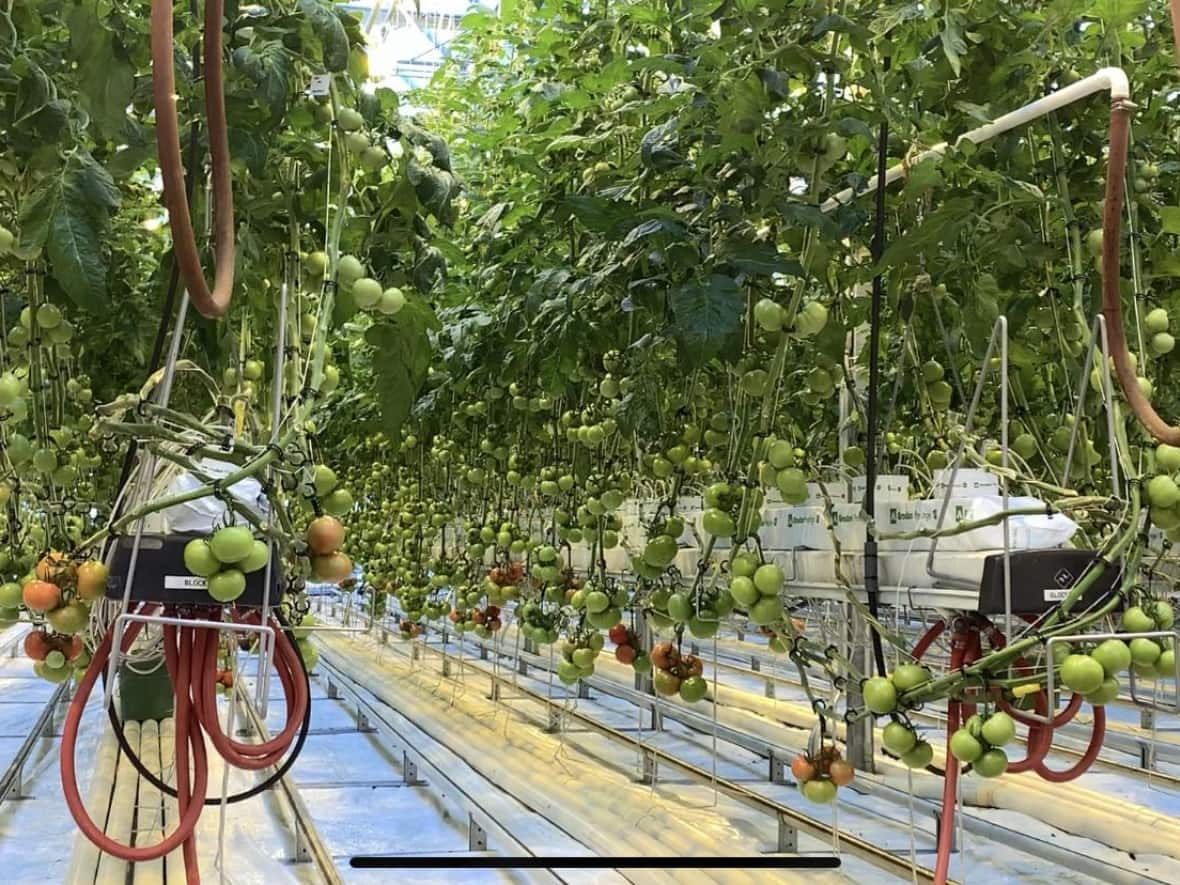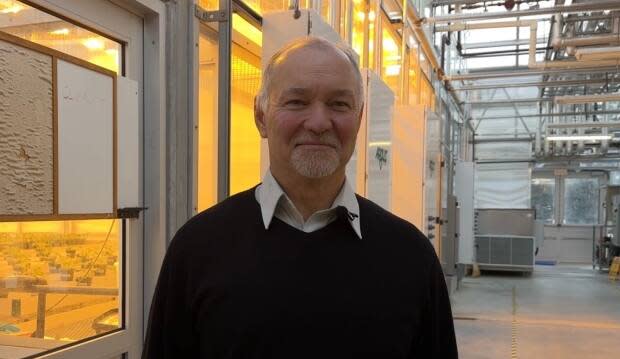Greenhouse research could boost Alberta's crop output of strawberries, tomatoes

Lethbridge College is about to wrap up the final phase of its 16-month greenhouse research.
The results will provide data-based findings for producers to apply in their commercial operations.
This week, Lethbridge College held its first public tour of the Sunterra greenhouse facility in Brooks, Alta.
Senior research scientist Nick Savidov says this work will advance technology to boost Alberta's crop output of tomatoes and strawberries during times of limited supply and low import quality.
"Which can help the industry to produce food more efficiently and with less expense and high quality. We are using scientific methodology in order to understand the effects of factors we study such as crop density or type of greenhouse, or varieties."
He says testing competitive technology will answer investment questions for producers, making their operations more profitable and economically sustainable.
"Lights are expensive, we are trying to compare different lights such as HPS (High pressure sodium) with LED lights. We want to see if the price of those lights are justified by producing high yields," he said.

Megan Shapka, director of applied research operations, says this greenhouse is unique because its a modern commercial facility.
"And these aren't standard greenhouses where we are growing without lights. We are testing high quality lights and the impact that's gonna have, especially in winter. We are testing automation. There's robots running through some of these greenhouses," she said.
This will provide opportunities for further research and growth. Savidov says results can be used to advance horticulture studies directed toward commercial production because different tests and factors can be compared to the data.

The first stage of research resulted in proving a 30 to 40 per cent higher yield in glass greenhouses opposed to polycarbonate.
The second stage will determine the results of different lights and cost-effectiveness, along with researching plant-density and variety.
We are testing automation. There's robots running through some of these greenhouses. - Megan Shapka, director of applied research operations
Currently, Alberta does not have a significant amount of greenhouse grown vegetables. Shapka says their studies can change that.
"It's about 200-300 acres in Alberta compared to 3,000 acres in Ontario. Most of these operations are growing Dutch or real standard varieties and they haven't been tested in Alberta. So continuing to explore what is best for Alberta is really important."
The final stage of data collection will end in mid-December, and a report will be made public in the next couple of months.
Savidov says making such research public will allow producers beyond their commercial partners to make informed operational decisions.

 Yahoo Movies
Yahoo Movies 
